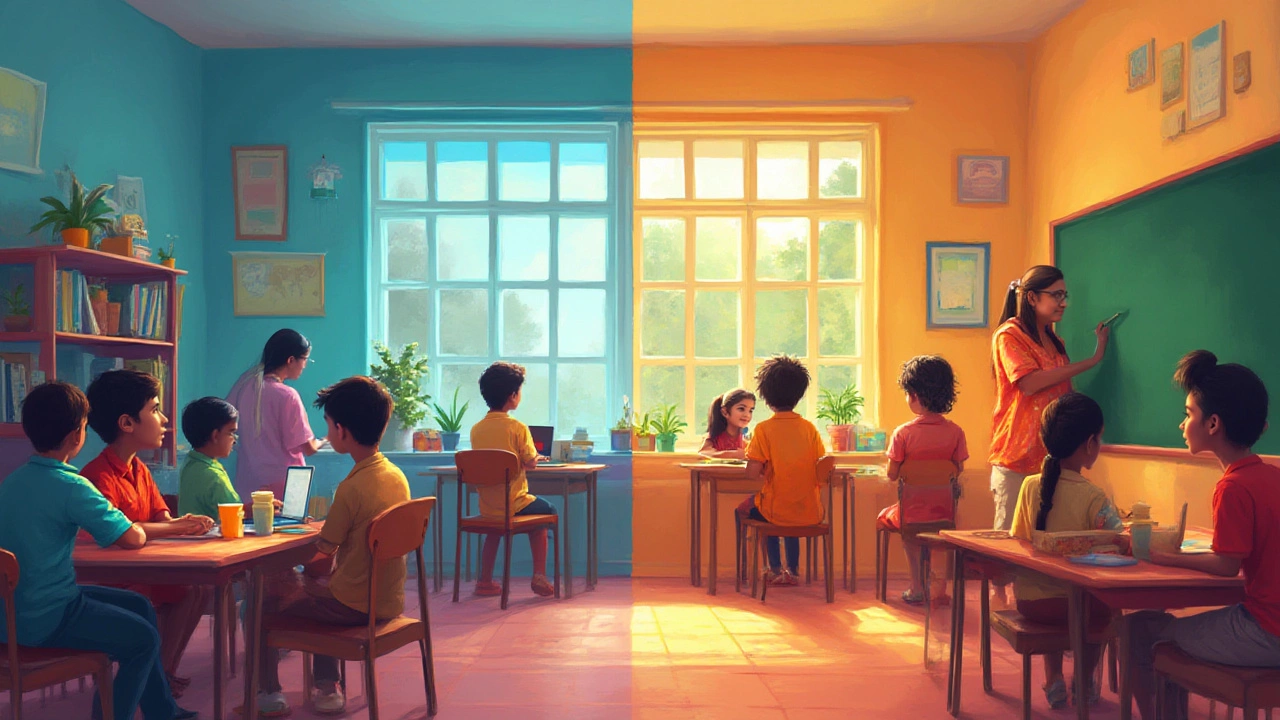Classroom Learning: How It Works in 2025 and Why It Still Matters
Walking into a classroom today feels different from ten years ago. You still have desks and a teacher, but the walls are covered with screens, the air buzzes with group chats, and the lesson plan includes a quick poll on the students' phones. If you’re wondering how to make the most of this mix, you’re in the right spot.
First off, good classroom learning starts with clear goals. Know what you want students to walk away with—whether it’s a math formula, a writing style, or a lab technique. Write those goals on the board, repeat them at the start, and check them at the end. It gives everyone a roadmap and keeps the session from drifting into random talk.
What Makes a Modern Classroom Effective
1. Active participation. Instead of lecturing for an hour, break the time into 10‑minute chunks: explain a concept, ask a quick question, let students discuss in pairs, then share a summary. This keeps attention high and lets learners test their understanding on the spot.
2. Technology as a tool, not a distraction. Use a simple platform like Google Slides or an interactive whiteboard to show visuals. If the class has a Wi‑Fi quiz app, fire off a poll after the main point—students get instant feedback, and you spot gaps fast.
3. Physical setup. Arrange chairs in a U‑shape or clusters rather than rows. It encourages eye contact and makes it easier for students to turn to each other for group tasks.
4. Clear routines. Start each class with a 2‑minute “warm‑up”—a question on the board, a quick recap of the previous lesson, or a short video clip. End with a “one‑sentence summary” where every student writes the key takeaway. Routines reduce chaos and give a sense of predictability.
Blending Classroom and Online for Better Results
Hybrid learning isn’t a buzzword; it’s a practical way to extend classroom time. Record a short explanation of a tough concept and upload it to a platform like YouTube or the college’s LMS. Students can rewind, pause, and watch at their own speed before the next face‑to‑face session. In class, use that video as a launchpad for discussion, case studies, or problem solving.
Another easy trick: assign a “digital homework” that requires students to post a question or comment on a forum. The teacher can then pick the most common doubt and address it in the next class. This creates a feedback loop that bridges the gap between classroom and online study.
When you combine the tactile feel of a real classroom with the flexibility of online tools, you get the best of both worlds—students stay engaged, teachers get real‑time data, and learning sticks longer.
Bottom line: effective classroom learning is less about the room’s size and more about purposeful interaction, clear goals, and smart use of tech. Keep the lessons short, active, and tied to a larger purpose, and you’ll see students walk out confident and ready for the next challenge.
- July
29
2025 - 5
Distance Learning vs Classroom: Which Is Better for Effective Education?
Wondering if distance learning or classroom learning is better? Here, we break down the facts, pros, cons, and give real advice for students, parents, and educators in 2025.
Read More